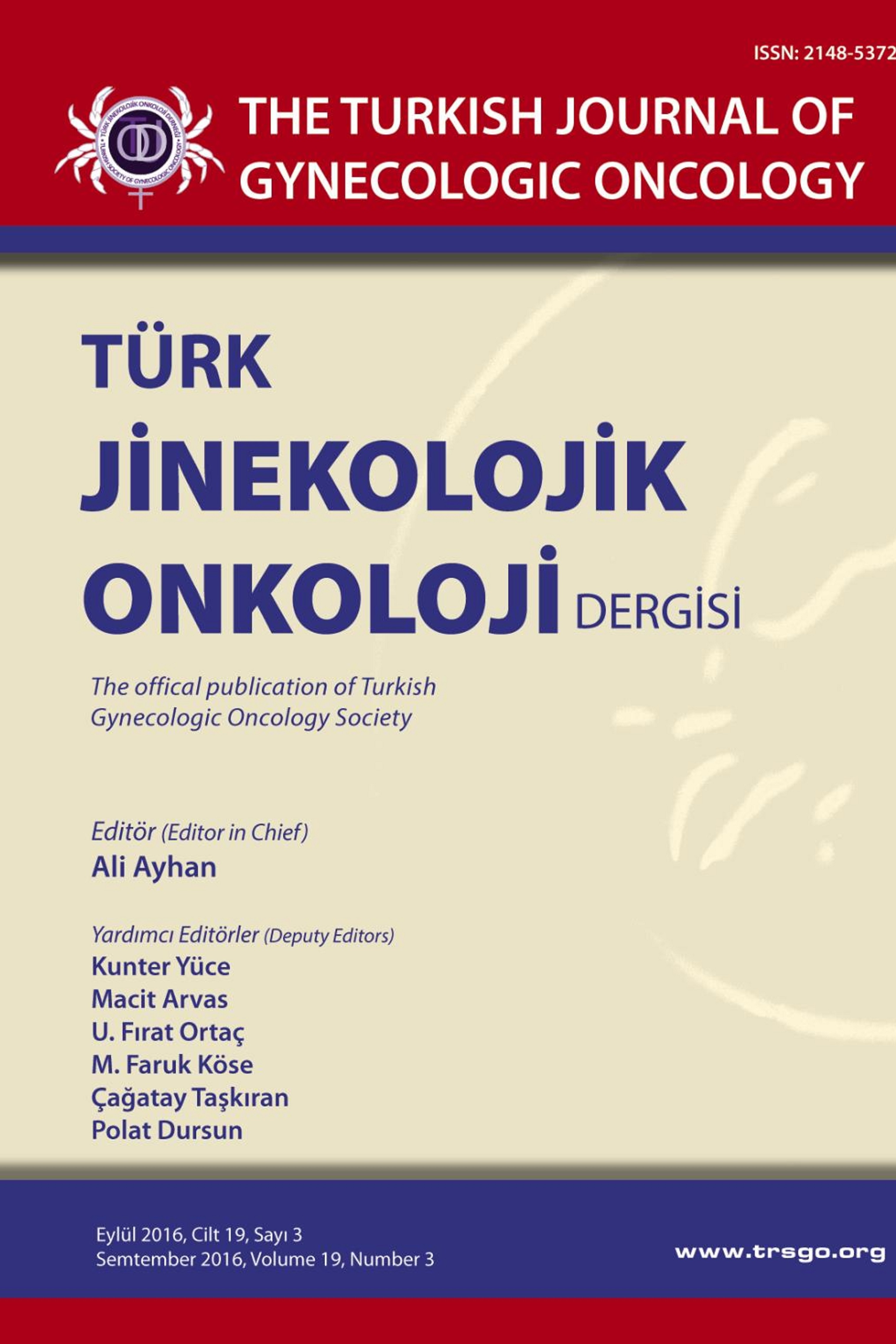İNOPERE SERVİKS KANSERİNDE ENDOKAVİTER BRAKİTERAPİ UYGULAMALARINDA RİNG VE OVOİD APLİKATÖRLERİNİN BİLGİSAYARLI PLANLAMA VE DOZİMETRİK ÖLÇÜMLERİNİN KARŞILAŞTIRILMASI
Amaç: İnopere serviks kanserli olgularda uygulanan tandemovoid (T-O) ve tandem-ring (T-R) aplikasyonlarının dozimetrik olarak karşılaştırılmasıdır. Materyal Metot: Ege Üniversitesi Tıp Fakültesi Radyasyon Onkolojisi kliniğinde tedavi edilen 8 inopere serviks kanserli olgunun TO ve T-R aplikatörlerle tedavileri dozimetrik olarak karşılaştırılmıştır. Uygulama aynı hastada T-O ve T-R aplikasyonu şeklinde tekrarlanarak yapılmıştır. Bulgular: T-O ve T-R aplikasyonları için ortalama dozlar (cGy) ve A noktası referans dozunun yüzdesi olarak değerlendirilmiş, ve sırasıyla ortalama mesane dozu 265 cGy (%53), 217 (%44) cGy (p=0.11), R1 referans noktasının dozu 342 cGy (%68), 291 cGy (%58), (p=0.04), R2 referans noktasının dozu 369 cGy (%73), 313 cGy (%62), (p=0.04), R3 referans noktası dozu 315 cGy (%63), 287 cGy (%57), (p=0.21), R4 referans noktasının dozu 272 cGy (%55), 236 cGy (%47), (p=0.19) ve ortalama vajen yüzey dozu 1203 cGy (%240), 1281 cGy (%256), (p=0.005) olarak bulunmuştur. Ovoid veya ring çapının ortalama vajen yüzey dozuna etkili olmadığı saptanmıştır. Sonuçlar: Rektal doz T-O aplikatörlerinde daha yüksek, ortalama vajen yüzey dozu ise T-R aplikatöründe daha yüksek olmakla birlikte, dozlar referans dozunun %80'inin altında ve tolerans sınırları içinde kalmaktadır. Aplikatör seçiminde hastanın anatomik yapısı ve tümör lokalizasyonu önem taşımaktadır.
Objective: To compare the dosimetric measurements of tandemovoid (T-O) and tandem-ring (T-R) applicators in inoperable cervical carcinoma patients. Material and Method: Eight inoperable cervical carcinoma patients were treated with external radiotherapy and brachytherapy at Ege University Faculty of Medicine Department of Radiation Oncology. T-O and T-R applicators were applied interchangeably to every patient and dosimetric plans of the applicators were compared. Results: Mean doses and the percentage of the reference doses of T-O and T-R applicators were as follows; for bladder 265 cGy (53%), 217 (44%) cGy (p=0.11), for R1 342 cGy (68%), 291 cGy (58%), (p=0.04), for R2 369 cGy (73%), 313 cGy (62%), (p=0.04), for R3 315 cGy (63%), 287 cGy (57%), (p=0.21), for R4 272 cGy (55%), 236 cGy (47%), (p=0.19), and vaginal surface doses 1203 cGy (240%), 1281 cGy (256%), (p=0.005) respectively. The diameter of the ovoid and ring applicators had no effect on the mean vaginal surface doses. Conclusion: Rectum doses were found higher in T-O, and vaginal surface doses were found higher in T-R applicators. However for both applicators the doses of the healthy organs were less than 80% of the reference dose and remained within the tolerance levels, and both applicators may be chosen for brachytherapy based on patient anatomy and tumor location.
